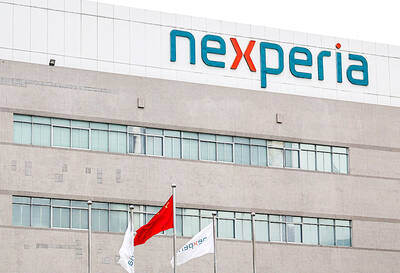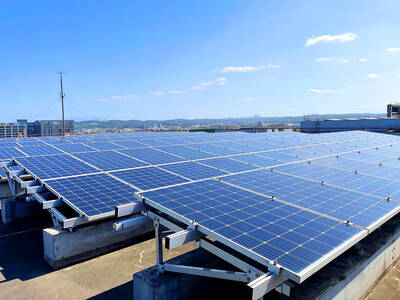Local PC monitor maker Innolux Display Corp (群創光電) said yesterday it would slow down construction of two new production lines in China that assemble flat panel displays for PC monitors and TVs to cope with contracting demand amid economic turbulence.
That will be part of the company’s broader cost-saving plan including slowing capacity expansion to stave off the global economic slump and unresolved oversupply of liquid-crystal-display (LCD) panels. Innolux is an affiliate of the nation’s largest electronics component supplier, Hon Hai Precision Industry Co (鴻海精密).
Last month, Innolux said it would process 60,000 sheets of 1,500mm x 1,850mm motherglass at a sixth-generation (6G) plant now under construction in Taiwan, down from its original plan of 90,000 sheets.
As panel demand shrinks, Innolux plans to “slow down the construction of a LCD module and system assembling plant in Xiamen as well. But, the investment project will carry on,” Innolux chief financial officer Thomas Hsu (許嘉成) said in a filing to the Taiwan Stock Exchange.
The company did not plan to halt construction, Hsu said, dismissing the Chinese-language Apple Daily’s report yesterday. The report said that Innolux had planned to suspend the new investment in China.
Innolux said it would carefully evaluate its capital spending.

JITTERS: Nexperia has a 20 percent market share for chips powering simpler features such as window controls, and changing supply chains could take years European carmakers are looking into ways to scratch components made with parts from China, spooked by deepening geopolitical spats playing out through chipmaker Nexperia BV and Beijing’s export controls on rare earths. To protect operations from trade ructions, several automakers are pushing major suppliers to find permanent alternatives to Chinese semiconductors, people familiar with the matter said. The industry is considering broader changes to its supply chain to adapt to shifting geopolitics, Europe’s main suppliers lobby CLEPA head Matthias Zink said. “We had some indications already — questions like: ‘How can you supply me without this dependency on China?’” Zink, who also

Taiwan Semiconductor Manufacturing Co (TSMC, 台積電) received about NT$147 billion (US$4.71 billion) in subsidies from the US, Japanese, German and Chinese governments over the past two years for its global expansion. Financial data compiled by the world’s largest contract chipmaker showed the company secured NT$4.77 billion in subsidies from the governments in the third quarter, bringing the total for the first three quarters of the year to about NT$71.9 billion. Along with the NT$75.16 billion in financial aid TSMC received last year, the chipmaker obtained NT$147 billion in subsidies in almost two years, the data showed. The subsidies received by its subsidiaries —

At least US$50 million for the freedom of an Emirati sheikh: That is the king’s ransom paid two weeks ago to militants linked to al-Qaeda who are pushing to topple the Malian government and impose Islamic law. Alongside a crippling fuel blockade, the Group for the Support of Islam and Muslims (JNIM) has made kidnapping wealthy foreigners for a ransom a pillar of its strategy of “economic jihad.” Its goal: Oust the junta, which has struggled to contain Mali’s decade-long insurgency since taking power following back-to-back coups in 2020 and 2021, by scaring away investors and paralyzing the west African country’s economy.

RE100 INITIATIVE: Exporters need sufficient supplies of renewable energy to meet their global commitments and remain competitive, the economics ministry said Local export-oriented manufacturers, including Taiwan Semiconductor Manufacturing Co (台積電), require sufficient supplies of green energy to maintain their competitiveness and regulations already ensure that renewable energy development adheres to environmental protection principles, the Ministry of Economic Affairs said yesterday, as the legislature imposed further restrictions on solar panel installations. The opposition-led Legislative Yuan yesterday passed third readings to proposed amendments to three acts — the Environmental Impact Assessment Act (環境影響評估法), the Act for the Development of Tourism (發展觀光條例) and the Geology Act (地質法) — which would largely prohibit the construction of solar panels in some areas. The amendments stipulate that ground-mounted solar